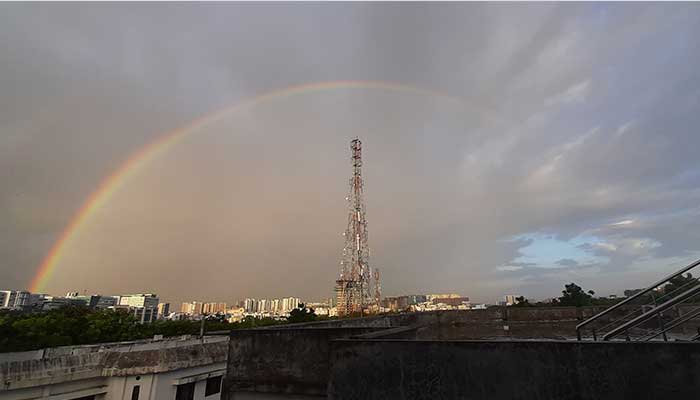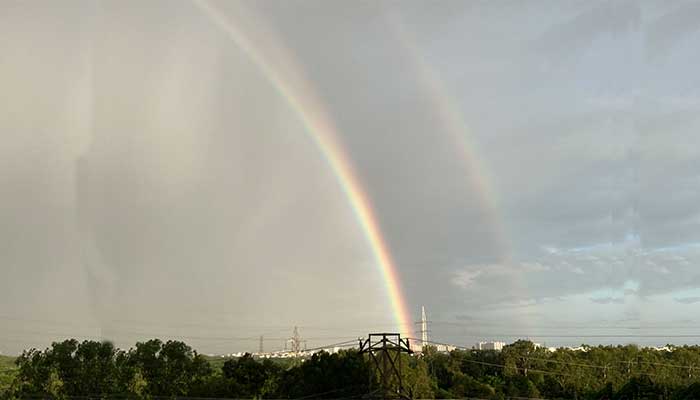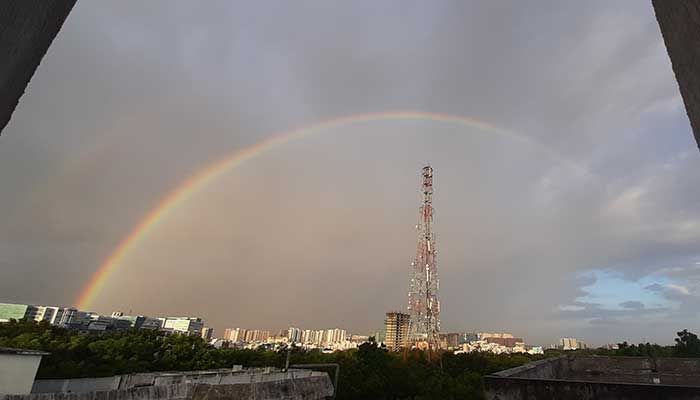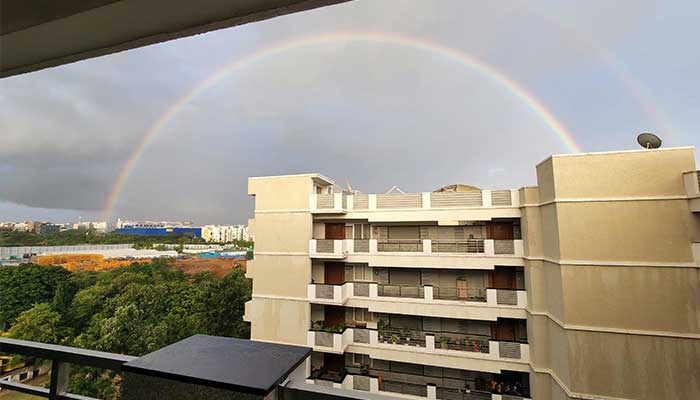August 2022
An unusual combination of a twinned rainbow and a double rainbow at the same time were visible on the evening of 11 August in Hyderabad. When two rain showers occur, the size of the raindrops can lead to the formation of a twinned rainbow. Students and faculty shared some images of the interesting phenomenon they viewed on campus




A rainbow is a meteorological phenomenon that is caused by reflection, refraction and dispersion of light in water droplets resulting in a spectrum of light appearing in the sky. It takes the form of a multicoloured circular arc. Rainbows caused by sunlight always appear in the section of sky directly opposite the Sun.
Rainbows can be full circles. However, the observer normally sees only an arc formed by illuminated droplets above the ground,and centered on a line from the Sun to the observer’s eye.
In a primary rainbow, the arc shows red on the outer part and violet on the inner side. This rainbow is caused by light being refracted when entering a droplet of water, then reflected inside on the back of the droplet and refracted again when leaving it.
In a double rainbow, a second arc is seen outside the primary arc, and has the order of its colours reversed, with red on the inner side of the arc. This is caused by the light being reflected twice on the inside of the droplet before leaving it.
A paper on Physically-based simulation of rainbows was published by Iman Sadeghi, UC San Diego; Adolfo Munoz, Universidad de Zaragoza; Philip Laven, Horley, UK; Wojciech Jarosz, Disney Research Zürich and UC San Diego; Francisco Seron, Universidad de Zaragoza; Diego Gutierrez, Universidad de Zaragoza and Henrik Wann Jensen, UC San Diego in In ACM Transactions on Graphics (Presented at SIGGRAPH), 2012.
In this paper the authors derive a physically-based model for simulating rainbows. Previous techniques for simulating rainbows have used either geometric optics (ray tracing) or Lorenz-Mie theory. Lorenz-Mie theory is by far the most accurate technique as it takes into account optical effects such as dispersion, polarization, interference, and diffraction. These effects are critical for simulating rainbows accurately. However, as Lorenz-Mie theory is restricted to scattering by spherical particles, it cannot be applied to real raindrops which are non-spherical, especially for larger raindrops. In this paper the authors presented the first comprehensive technique for simulating the interaction of a wavefront of light with a physically-based water drop shape. Their technique is based on ray tracing extended to account for dispersion, polarization, interference, and diffraction. Their model matches Lorenz-Mie theory for spherical particles, but it also enables the accurate simulation of non-spherical particles. It can simulate many different rainbow phenomena including double rainbows and supernumerary bows. They showed how the non-spherical raindrops influence the shape of the rainbows, and they provide a simulation of the rare twinned rainbow, which is believed to be caused by non-spherical water drops.
Full paper: https://cs.dartmouth.edu/wjarosz/publications/sadeghi11physically.html

